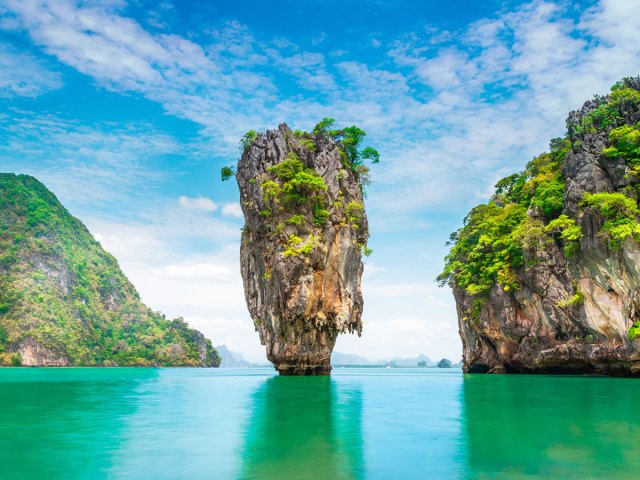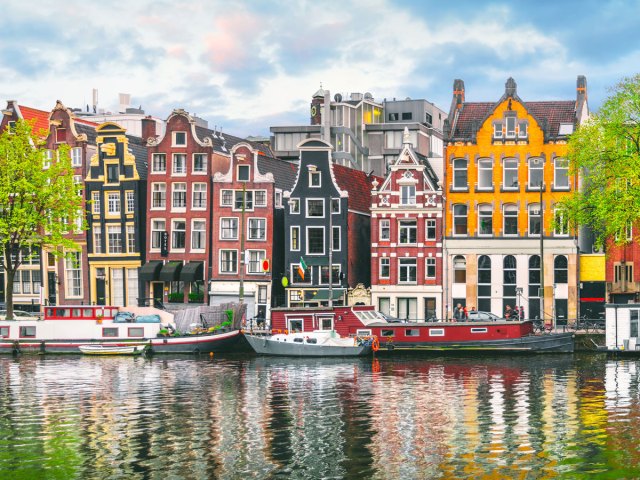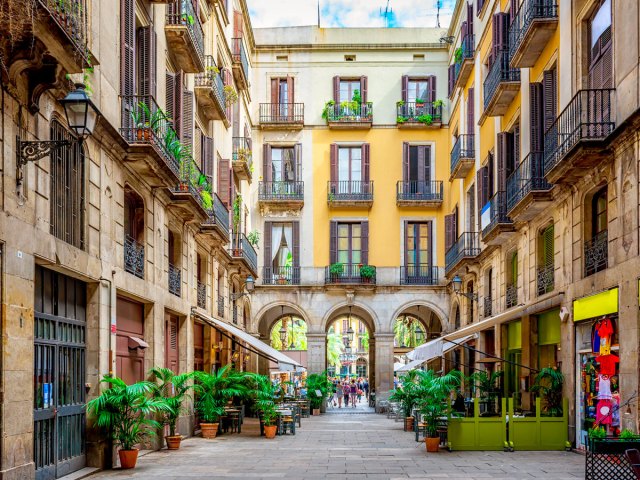The pandemic had a devastating effect on the worldwide tourism industry. But it also allowed countries and municipalities to take a step back and examine tourism policies and how tourism affects the local people who live and work in some of the world’s most popular destinations. While tourist “fees” in the form of hotel taxes have been common in U.S. and European cities for some time, certain destinations around the world are increasing those fees or adding so-called “day tripper” tariffs to boost revenue and buffer the effects of mass tourism. Be prepared to pay to stay in these seven destinations around the world that now charge a tourist tax to visit.
Venice, Italy

Few places have suffered as much from overtourism as Venice, the famed Italian city of canals. For decades, massive cruise ships have unloaded thousands of passengers straight into the heart of the historic city. Although the largest craft are now redirected to the industrial port outside the historic city center, Venice still finds itself overcrowded with tourists, many of whom only come in for a day or two.
Since 2011, Venice has charged overnight visitors tax on the first five nights of their stay. The amount — between €1 and €5 per person a night, varies depending on the style of accommodation, time of year, and area of the city in which visitors stay. Starting in 2024, Venice also implement an access fee for day visitors (aged 14 or older) to the historic city center. Those who book at least four days in advance pay a €5 entry fee, while those who show up last-minute can expect to pay €10.
Thailand

As of June 2023, international visitors to the “Land of Smiles” now pay a modest fee when entering the country. Tourists arriving by air will find a 300 baht (about $9 USD) fee built into their ticket, while those coming by bus, train, or boat may notice a 150 baht ($4.50) surcharge. Most travelers would agree it’s a small price to pay to enjoy Thailand’s famous beaches, ornate temples, bevy of national parks, and unique cultural attractions such as its floating markets.
Amsterdam, The Netherlands

Amsterdam has become a European tourism hot spot, particularly in recent years. Crisscrossed by canals, the Dutch city is sometimes called the “Venice of the North,” and visitors are drawn to its charming architecture, world-class museums, and nightlife in its infamous Red Light District. Perhaps in an attempt to discourage rowdy visitors, Amsterdam now has the highest tourist tax in Europe. In 2025, taxes on room rates have increased to 12.5% of the overnight price, and the fee for “day trippers” increased to €14.50 per person.
Bhutan

Visitors to this Himalayan kingdom — an increasingly popular tourist destination — are faced with strict tourism rules designed to maintain Bhutan’s cultural heritage. Prior to the pandemic, visitors were required to spend a minimum of $200 to $250 USD per day, which included a $65 Sustainable Development Fee. These costs were usually part of tour packages that included the fee along with hotel, food, and transportation charges. Bhutan changed that structure in 2022 in favor of a set $200 SDF. A current promotion, however, cuts the daily fee to $100 for U.S. travelers through 2027. Travelers who pay the fee for the first four nights or seven days can stay an additional four nights without paying an additional fee.
Spain

Spain set a foreign tourism record in 2024, welcoming 94 million international visitors. Faced with fast-growing tourism numbers, numerous municipalities in Spain have imposed modest taxes on visitors. As of October 1, 2025, tourists in Barcelona pay between €10 and €15 per night in tourist taxes, depending on the category of accommodations (e.g., 4-star or 5-star). On the Balearic islands (Menorca, Mallorca, Formentera, and Ibiza) fees vary from €1 to €4 per night, depending on accommodation type.
Japan

Tourists visiting the “Land of the Rising Sun” now pay a ¥1,000 (about $7 USD) departure fee. Nicknamed the “sayonara tax,” the fee was implemented in 2019 to “expand and enhance Japan’s tourist infrastructure in an effort to make Japan the top tourist destination,” according to the Japanese government. In addition, a number of small Japanese islands are considering entrance fees in an attempt to deal with the effects of millions of visitors. One of the most popular times to visit is during Japan’s cherry blossom (sakura) season, when the country is covered in these picturesque pink and white flowers.
European Union

The United States offers a ESTA (Electronic System for Travel Authorization), a visa waiver program that allows visitors from select countries to enter for up to 90 days without obtaining a visa. In late 2026, the European Union is introducing ETIAS, a similar program, for American (and other) travelers. While the ETIAS application fee is €20 (around $23 USD), it will allow you to freely enter the 27 countries in the EU for a 90-day period.
More from our network
Daily Passport is part of Inbox Studio, which publishes content that uplifts, informs, and inspires.
















